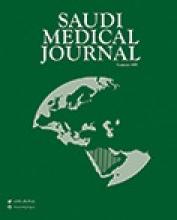Abstract
OBJECTIVE: To determine the role of lymph node biopsy in the diagnosis of lymphadenopathy and to find out the pattern of different diseases in relation to age, gender, and the site of lymph nodes involved.
METHODS: This retrospective study was carried out at the Histopathology Department of the Children's Hospital and The Institute of Child Health, Lahore, Pakistan, over a period of 9 years, from January 1999 to December 2007. Tissue samples were collected from 898 children presenting with lymphadenopathy, and the diagnosis was confirmed on histology and through various specific tests. The clinical data of the patients were collected from computerized hospital records.
RESULTS: Among the total 898 consecutive lymph node biopsies, the most common pathology encountered was reactive hyperplasia in 356 children (39.6%), followed by tuberculosis in 262 (29.1%) and malignant lymphomas in 132 children (14.6%). The rest of the lesions include; 72 cases of granulomatous lymphadenitis (8%), 13 of histiocytosis X (1.4%), 44 (4.9%) of metastatic tumors, 16 of chronic inflammation (1.8%), and 3 cases of Kikuchi's disease (0.3%). The cause of lymphadenopathy was found to be significantly associated with age, gender, and site of the lymph nodes involved.
CONCLUSION: Lymphadenopathy is a relatively common condition in the pediatric age group. Although 39.6% of children had reactive hyperplasia of unknown etiology, 60.3% children presented with a specific diagnosis. Lymphadenopathy is a relatively common condition in the pediatric age group. Although 39.6% of children had reactive hyperplasia of unknown etiology, 60.3% children presented with a specific diagnosis.
- Copyright: © Saudi Medical Journal
This is an open-access article distributed under the terms of the Creative Commons Attribution-Noncommercial-Share Alike 3.0 Unported, which permits unrestricted use, distribution, and reproduction in any medium, provided the original work is properly cited.






